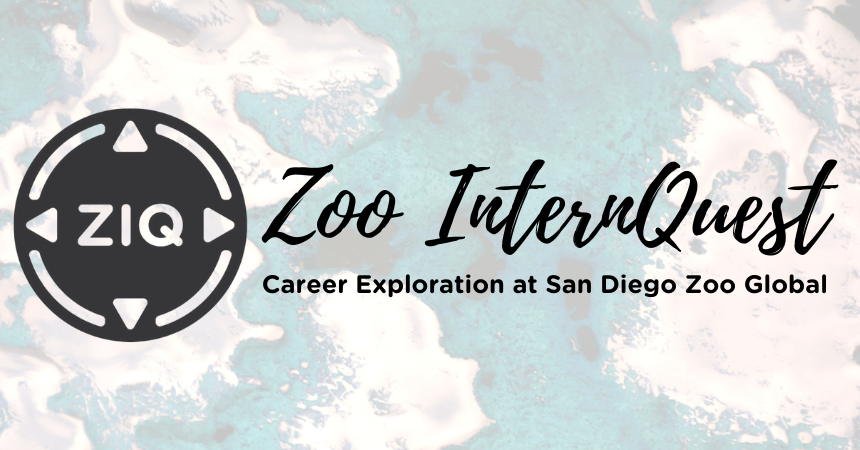Zoo InternQuest is a seven-week career exploration program for San Diego County high school juniors and seniors. Students have the unique opportunity to meet professionals working for the San Diego Zoo, Safari Park, and Institute for Conservation Research, to learn about their jobs, and then blog about their experience online. Follow their adventures here on the Zoo’s website!
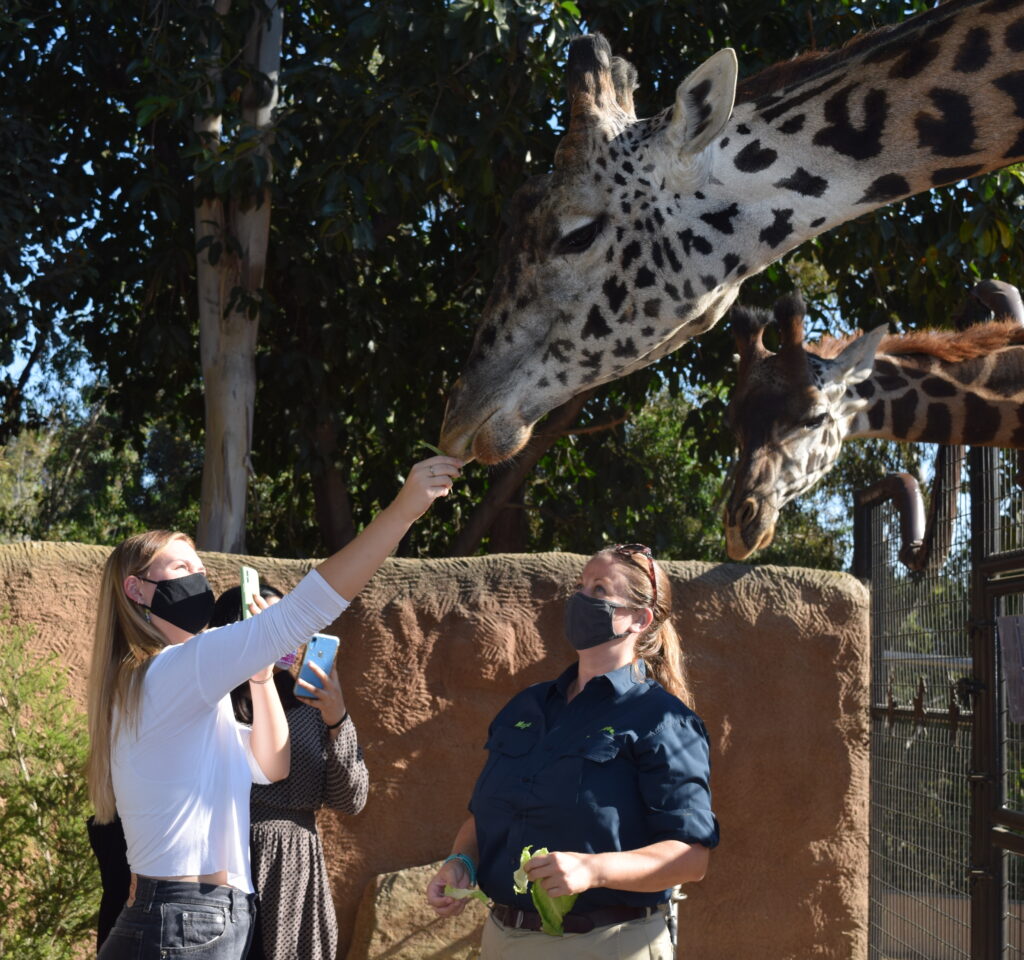
From conservation research to feeding a giraffe lettuce leaves, the San Diego Zoo provides its visitors with eye-opening experiences, educational information, and stands for the protection of wildlife. Many changes have occurred since its first opening in 1916. As stated by one of the Educator Guides, the Zoo’s focus has shifted from being a zoo that dabbled in conservation to a worldwide conservation organization with a zoo.
Everyone has a different path, and it’s intriguing to discover each employee’s individual story. Today interns had the pleasure of meeting a Senior Educator Guide, Maya O’Connor who has been working at the San Diego Zoo for over ten years now. She is a California native, growing up near Mt. Lassen and attending UC Davis, receiving a major in animal science with a minor in education. She was originally focused on veterinary school but realized her passion for education, and decided to change her career path. Ms. O’Connor taught in northern California as an FFA (Future Farmers of America) teacher where she helped her students discover their passion for science and agriculture. When she became aware of a job opportunity at the San Diego Zoo, she decided to apply. After her acceptance, she came to the San Diego Zoo where she’s been an invaluable resource for the last decade.

With education being a significant component of wildlife conservation, Ms. O’Connor strives to inform guests of all ages about the importance of caring for wildlife. With a little over a decade of experience in conservation education, Ms. O’Connor has certainly left a significant impact. What makes her career so unique is her ability to create strong connections with guests, face-to-face, as well as a relationship with the animals themselves. Being a part of the Education Department at the San Diego Zoo has allowed her to truly enjoy the sight of curiosity and excitement that radiates from guests’ faces. Rather than teaching guests about wildlife species with a PowerPoint presentation, guests gain a more personal understanding when met directly with the animal. Throughout her career, Ms. O’Connor has developed the skill set of examining animals’ behavioral changes and responding with positive reinforcement methods. She told us that, when an animal reacts out of panic or hesitation, it is always important to handle the situation with patience. Every animal is different and therefore should be treated according to their individual needs. Training and analyzing animal behaviors has become Ms. O’Connor’s forte, which allows wildlife under her supervision to feel comfortable throughout their training process. When she is educating guests, she not only goes on to explain species information, but also why these animals are so important to our planet. She addresses whether the species is stable, threatened, or endangered, and she gives explanations as to why this is. By addressing the issues that may threaten the given species, she teaches us what we can do as a community to help. Not all people who want to learn about the Zoo can be physically present, and that is why educators like Ms. O’Connor are available to teach people through a variety of conservation outreach and virtual programs as well. Without educators at the San Diego Zoo, connecting to the larger community would not be as effective.
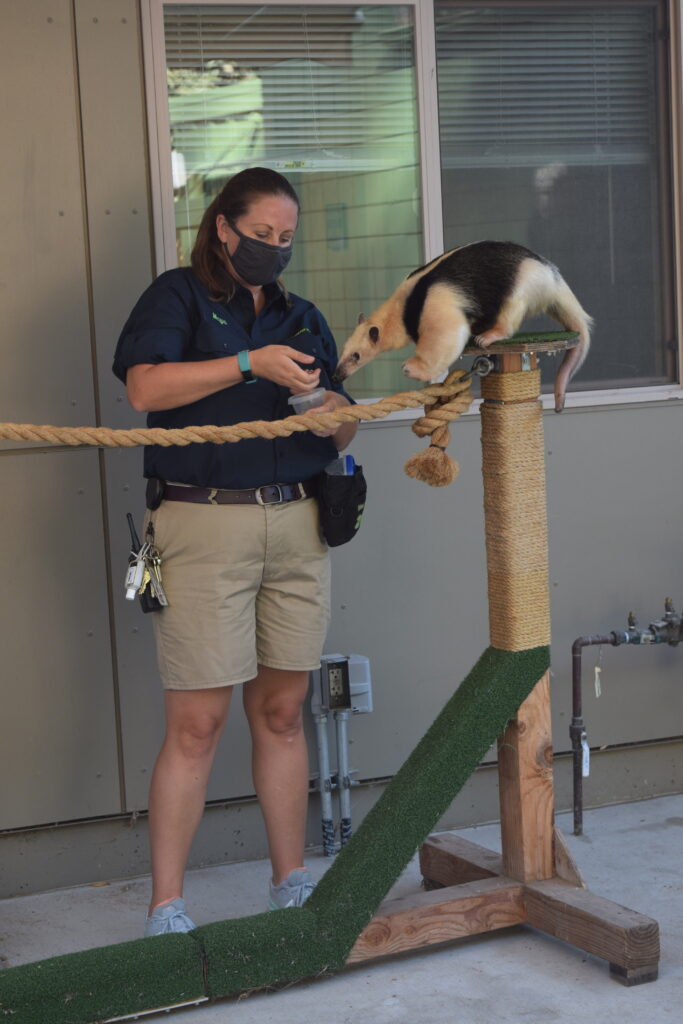
Ms. O’Connor is dedicated, not only to studying amazing wildlife and ecosystems, but also educating the public about the importance of preserving our earth and how impactful a single person can be. Her job involves working with animals and teaching guests about the importance of zoos, wildlife, and the action steps one can take to help save different species from possible extinction. One of the species Ms. O’Connor works with at the Zoo is the giraffe, and she also works with community members in Kenya to help giraffes coexist with the people living in those communities. Ms. O’Connor shared a way the general public can help giraffes is by visiting wildwatchingkenya.org. By visiting this website, anyone can help the researchers at San Diego Zoo Global identify where different giraffes are, in order to help decide where to focus conservation efforts. These efforts have slowed the giraffe extinction rate drastically, and because of this, the reticulated giraffe has a much better chance of a stable future. Ms. O’Connor’s passion to save the animals she loves by educating the people around her, truly makes her a Wildlife Hero.
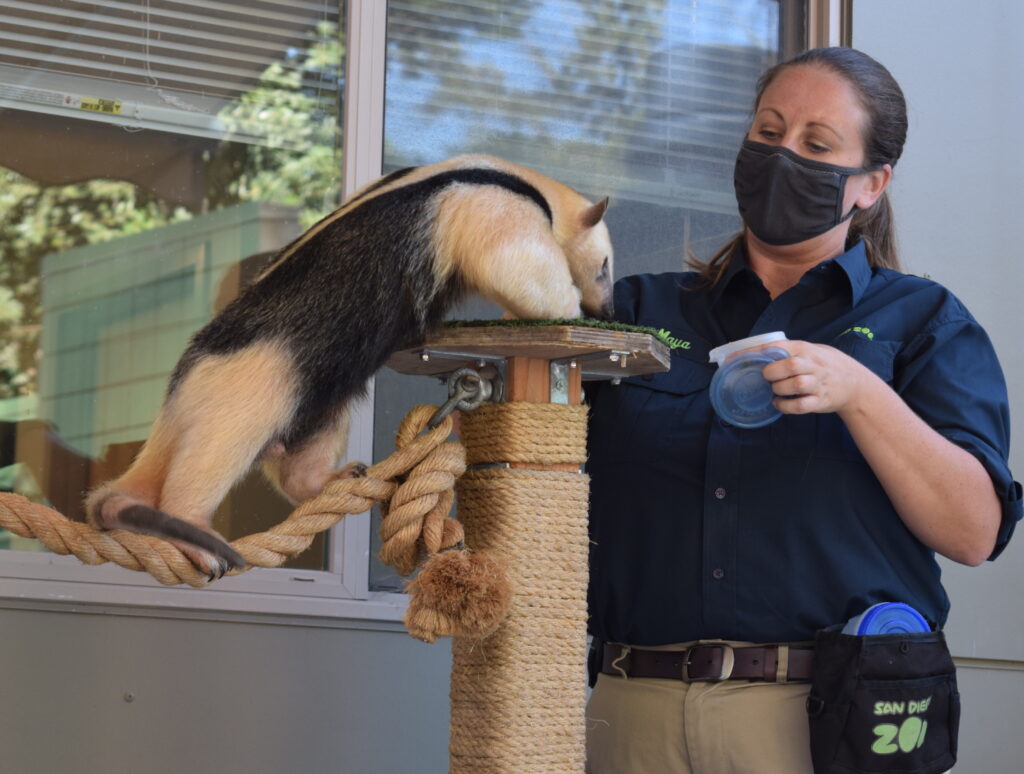
One of the most important things that Ms. O’Connor has learned in her career is being aware of behaviors of both the animals and the audience. Because of this, she recommends that people who are interested in her career learn a bit about psychology, as it helps her to manage uncomfortable situations where animals aren’t being cooperative and recognize audience responses. She recommends being patient and always considers other people’s perspectives, and don’t get upset when they are misinformed; instead, take it as an opportunity to educate and promote growth. She also says to venture out and get experience in your field of interest, such as volunteering, teaching, animal handling, or working at veterinary clinics. She emphasizes that when things get difficult, always remind yourself of your goals, passions, and why you are there. In the case of Ms. O’Connor, it’s the love of animals and education that keeps her going, something that’s extremely palpable when she talks about her job!
During Ms. O’Connor’s time at the Zoo, she has made memories she will always remember. Her favorite memories are the opportunities working with wildlife ambassadors, which are trained education animals representing their species. She explained how some ambassadors are easier to manage while others can be quite difficult. Ms. O’Connor and other wildlife care specialists were tasked to train a parrot, named Rio, to be able to stand camly on a perch while getting his nails trimmed. Rio had his difficulties, but he was able to overcome those obstacles taking things step by step, and was finally able to calmly participate in his training steps. Many may think that it wasn’t that special, but to Ms. O’Connor that was one of her best training breakthroughs. Some of her career opportunities have even taken her abroad. Two of her absolute favorite places to visit are Kenya and Cambodia. During those visits she got to experience riding in the back of a truck only a couple feet away from an elephant, seeing rescued bears up close, or even coming face to face with orphaned giraffes. She loved watching these animals in their natural habitat.
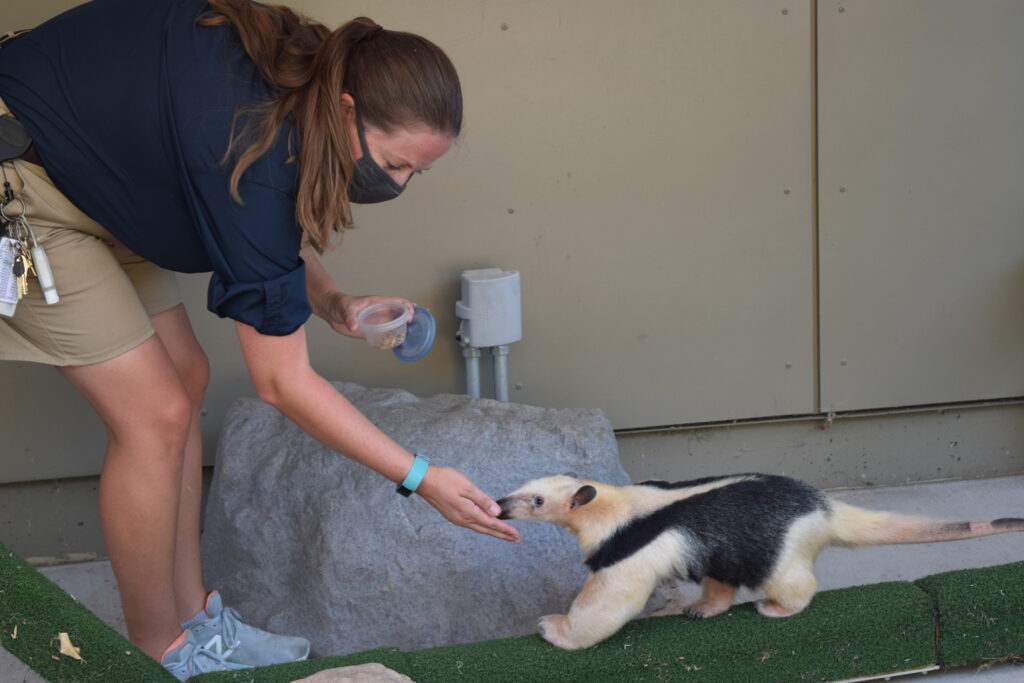
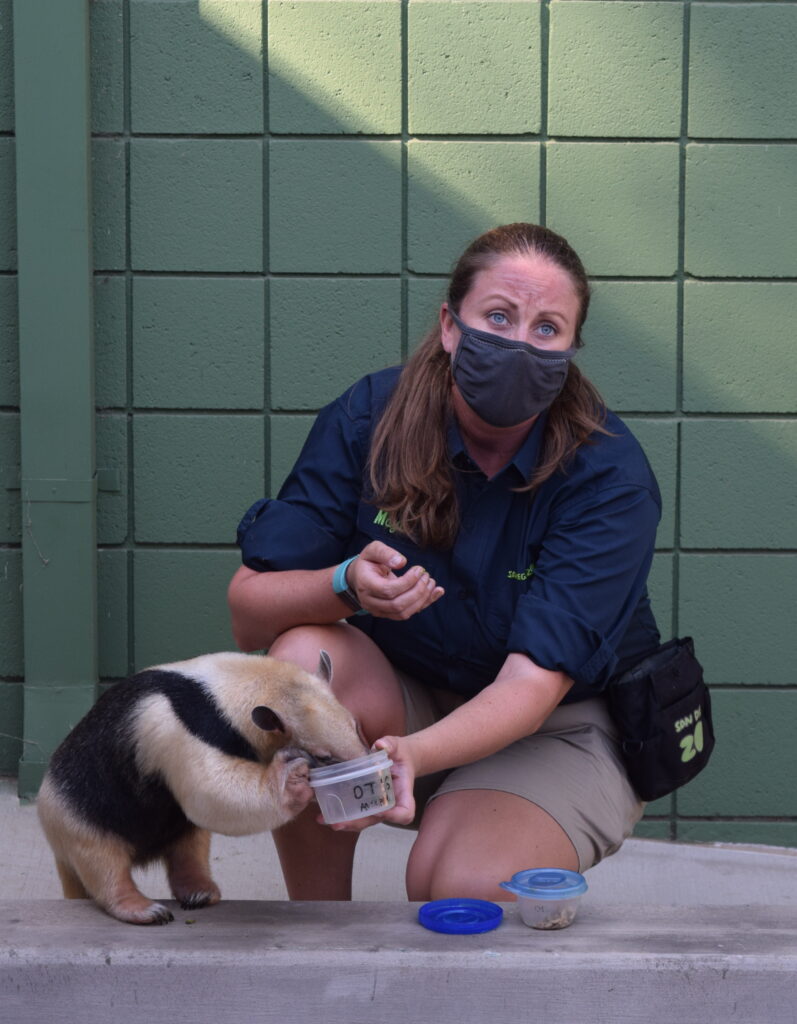
Interns had the chance to meet Otis the tamandua, one of the wildlife ambassadors Ms. O’Connor works with. Tamanduas are also known as lesser anteaters, and are from South America. Due to the fact that they spend most of their time climbing in the trees, they have developed extremely strong forearm muscles. They also have a prehensile tail, which means they are able to grab or hold things with their tails. While their main predators are jaguars and harpy eagles, the biggest threat facing this species is habitat loss. Deforestation and major fires have caused tamanduas to lose over 2,000,000 acres of habitat, that’s about 8.4 million football fields. After meeting Otis, the interns visited the Masai giraffes, native to eastern Africa. These beautiful animals can grow to be 17 feet and up to 2,600 lbs. Similar to the tamandua, the Masai giraffes are facing major problems threatening their population. They are often poached for food, or use their bones for medicinal purposes. Although there are organizations working to protect these animals, their population is decreasing faster than it may seem.
One of the goals of San Diego Zoo Global is to connect guests with nature and ignite a passion for change. The more interactions we have with different species, the more connected we become to them. With these connections, hopefully we will feel inclined to help their situations and protect them against serious threats. By volunteering and supporting your community or local zoos, you can make a difference and help preserve the beautiful ecosystems we have on this planet.
Week One
Fall Session 2020

